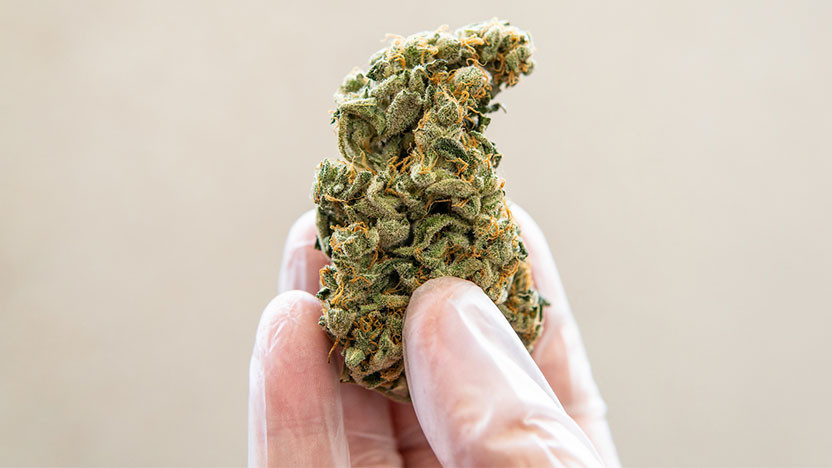
What is THCA Flower? A Beginner’s Guide to Benefits and Uses
In recent years, the cannabis industry has witnessed a surge in interest surrounding various cannabinoids, with tetrahydrocannabinolic acid, or THCA, emerging as a notable component. Unlike its well-known counterpart, THC, THCA is a non-psychoactive compound found in raw cannabis flowers, offering a unique array of potential benefits without the intoxicating effects commonly associated with marijuana. As consumers become increasingly educated about the nuances of cannabis, understanding THCA and its properties is essential for those seeking to explore its therapeutic potential. This beginner’s guide will delve into what THCA flower is, how it differs from THC, and the various benefits and uses that have attracted the attention of health-conscious individuals and cannabis enthusiasts alike. From its potential anti-inflammatory and neuroprotective properties to the ways it can be consumed, THCA flower represents a promising avenue for those interested in harnessing the plant’s benefits in a non-psychoactive form. Whether you are a curious newcomer or a seasoned cannabis user looking to expand your knowledge, this guide aims to provide a comprehensive overview of THCA flower, empowering you to make informed decisions about its incorporation into your wellness routine.
Understanding THCA Flower and Its Composition
THCA flower, derived from the cannabis plant, is characterized by its unique composition of phytocannabinoids and terpenes. Unlike THC, which is psychoactive, THCA is non-intoxicating in its raw form, making it appealing to those seeking the therapeutic benefits of cannabis without the psychoactive effects. The flower contains a variety of compounds, including flavonoids and essential oils, which contribute to its aroma and flavor profile. The presence of these compounds not only enhances the sensory experience but may also work synergistically with THCA, potentially amplifying its therapeutic effects.
The chemical structure of THCA includes a carboxylic acid group, which differentiates it from THC. When exposed to heat through processes like smoking or vaping, THCA undergoes decarboxylation, transforming into THC and producing the characteristic psychoactive effects. This process highlights the importance of understanding the composition and preparation of THCA flower for those interested in harnessing its potential benefits. By recognizing the distinct properties of THCA, consumers can make informed choices about their cannabis use, whether for medicinal or recreational purposes.
Therapeutic Benefits of THCA Flower
Research indicates that THCA flower may offer various therapeutic benefits, making it a valuable option for individuals seeking relief from a range of conditions. Early studies suggest potential anti-inflammatory properties, which could be beneficial for those suffering from chronic pain, arthritis, or other inflammatory disorders. Additionally, THCA may exhibit neuroprotective effects, providing a promising avenue for research on neurodegenerative diseases such as Alzheimer’s and Parkinson’s, where cellular protection is critical.
Furthermore, the presence of other cannabinoids and terpenes in THCA flower may enhance its therapeutic potential through the entourage effect, where the compounds work in synergy to produce greater health benefits. Users have reported relief from symptoms such as nausea, anxiety, and muscle spasms, suggesting that THCA’s non-intoxicating properties can provide a therapeutic alternative for individuals who wish to avoid the psychoactive effects associated with traditional cannabis use. As research continues to evolve, the full scope of what is THCA flower and its potential benefits remains an area of great interest within both the scientific community and the medical field.
Common Uses of THCA Flower
The versatility of THCA flower lends itself to a variety of practical applications, particularly among those seeking non-psychoactive options for wellness. Many users incorporate THCA flower into their wellness routines by utilizing it in raw form, often through juicing or adding it to smoothies, capitalizing on its potential health benefits without the intoxicating effects associated with other cannabinoids. Additionally, THCA flower is increasingly being used in culinary applications, where it can be infused into oils or butters, allowing for creative incorporation into various dishes while maintaining its therapeutic properties.
Moreover, the growing popularity of THCA flower in the realm of alternative medicine reflects a shift towards holistic approaches to health. Many individuals are exploring its potential for alleviating conditions such as inflammation, nausea, and anxiety, often opting for THCA-rich products as they seek to manage symptoms without the high typically associated with THC. The increasing availability of this flower in dispensaries speaks to a rising awareness and appreciation of its unique profile, making it a valuable addition to the repertoire of those interested in cannabinoid therapy.
In conclusion, THCA flower presents a promising option for those seeking the therapeutic benefits of cannabis without the psychoactive effects associated with THC. As we have explored, THCA retains its non-intoxicating properties while offering potential relief for various conditions, including inflammation and nausea. Its versatility allows for a range of consumption methods, from raw juicing to vaporization, catering to individual preferences and lifestyles. As research continues to unfold regarding the full spectrum of cannabinoids and their effects, THCA flower stands out as a valuable addition to the cannabis conversation, inviting both newcomers and seasoned users to explore its unique advantages. Whether you are considering it for medicinal purposes or simply wish to expand your understanding of cannabis, THCA flower offers a compelling glimpse into the future of cannabinoid use.






